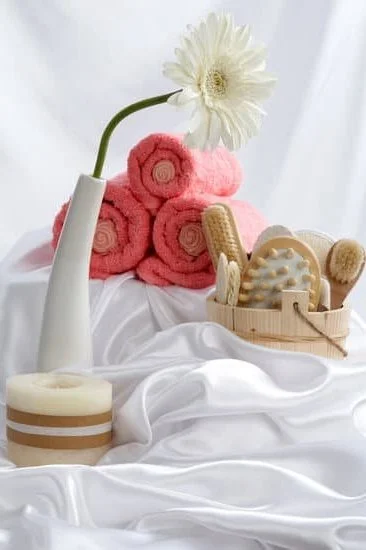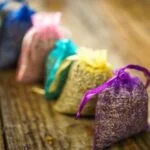Aromatherapy has gained popularity for its numerous benefits, especially when it comes to skincare. In this article, we will delve into the world of aromatherapy essential oils and how to effectively mix them for use on the skin. Essential oils have the potential to improve skin health and address various skin concerns, making them a valuable addition to any skincare routine.
When it comes to aromatherapy essential oils, there are a plethora of options to choose from, each with its own unique properties and benefits for the skin. From calming lavender and rejuvenating rosehip to clarifying tea tree and hydrating jojoba, understanding the different essential oils available is crucial in creating a personalized blend that suits your specific skincare needs.
In addition to essential oils, carrier oils play a vital role in blending with essential oils for safe application on the skin. The right carrier oil can enhance the absorption of essential oils and provide additional nourishment for the skin. Understanding how to choose the right carrier oil based on your skin type is an important aspect of creating effective aromatherapy blends for skincare.
Choosing the Right Carrier Oil
When it comes to using aromatherapy essential oils on the skin, choosing the right carrier oil is crucial. Carrier oils play a vital role in diluting essential oils and carrying them onto the skin, making them an essential component in creating safe and effective blends for skincare. Here are some tips for selecting the best carrier oil for your skin type:
- Consider Your Skin Type: Different carrier oils have different properties that make them suitable for specific skin types. For example, jojoba oil is great for all skin types, while rosehip oil is beneficial for dry and aging skin. Research the properties of carrier oils to find the best match for your skin’s needs.
- Test Sensitivity: Before committing to a specific carrier oil, it’s important to perform a patch test to ensure that you don’t have any adverse reactions. Apply a small amount of the carrier oil to a discreet area of your skin and monitor it for 24 hours. If there are no signs of irritation or redness, the carrier oil should be safe to use.
- Consider Absorption Rate: Some carrier oils absorb quickly into the skin, while others take more time. If you prefer a lighter texture, opt for fast-absorbing oils like grapeseed or sweet almond oil. Conversely, if you want a more nourishing option, go for slower-absorbing oils such as avocado or coconut oil.
Once you’ve selected the right carrier oil for your skin type and preferences, you’re ready to start blending with essential oils to create custom skincare products that cater specifically to your needs.
By following these tips on how to mix aromatherapy essential oil to use on skin with the appropriate carrier oil, you can ensure that your blends are not only safe but also effective in promoting healthy and radiant-looking skin.
Understanding Essential Oil Dilution
Essential oils are highly concentrated and potent extracts from plants, which makes them ideal for use in aromatherapy. When it comes to using essential oils on the skin, it is crucial to understand the importance of dilution. Dilution not only ensures the safety of using essential oils but also enhances their effectiveness in skincare.
One important factor to consider when diluting essential oils is the age and skin sensitivity of the individual. For children, the elderly, and those with sensitive skin, a lower concentration of essential oil is recommended to avoid any adverse reactions. It is generally advised to use a 1-2% dilution for facial skincare and a 2-5% dilution for body treatments. Here are some guidelines on how to mix aromatherapy essential oil to use on skin:
- Choose your carrier oil: Selecting the right carrier oil is essential for diluting essential oils. Some popular carrier oils include jojoba oil, sweet almond oil, coconut oil, and grapeseed oil. Each carrier oil has its own benefits and properties that cater to different skin types.
- Calculate the correct ratio: To achieve the desired dilution percentage, it’s important to calculate the correct ratio of essential oil to carrier oil. For example, if you want a 2% dilution for a facial serum containing 30 ml of carrier oil, you would add approximately 12 drops of essential oil.
- Blend thoroughly: Once you have calculated the correct ratio, blend the essential oils with the carrier oil thoroughly before applying it to your skin. This ensures that the essential oils are evenly distributed for maximum effectiveness.
Understanding how to properly dilute and mix aromatherapy essential oils for use on your skin is key in reaping their full benefits while keeping your skin safe from any potential adverse effects.
Blending Essential Oils
When it comes to creating a balanced and effective blend of essential oils for skin care, it’s important to understand the properties of each oil and how they can benefit your skin. Each essential oil has its own unique scent and therapeutic properties, so blending them thoughtfully can result in a powerful combination that addresses specific skin concerns.
Knowing how to mix aromatherapy essential oils to use on the skin involves understanding the different categories of essential oils: top notes, middle notes, and base notes.
Top notes are light, fresh, and uplifting oils such as lemon, grapefruit, and peppermint. Middle notes are warm, floral, and balancing oils like geranium, chamomile, and rosemary. Base notes are deep, grounding, and soothing oils such as sandalwood, patchouli, and cedarwood. When blending essential oils for skin care, it’s recommended to use a combination of top, middle, and base note oils to achieve a well-rounded aroma with complementary therapeutic benefits.
To create a basic blend of essential oils for skin care purposes, you can start by using 10-15 drops total of essential oil per 1 ounce of carrier oil. Carrier oils play an important role in diluting the potent nature of essential oils for safe application on the skin.
Some popular carrier oils include coconut oil for its moisturizing properties or jojoba oil for its similarity to the skin’s natural sebum. It is also crucial to consider the shelf life of carrier oils when storing your blends.
In addition to selecting appropriate carrier oils for your specific needs based on factors such as skin type or preferred aroma profile options include using lavender with tea tree oil for acne-prone skin or combining frankincense with rosehip seed oil for anti-aging benefits.
| Essential Oil | Skin Concerns |
|---|---|
| Lavender | Acne-prone skin |
| Tea Tree Oil | Acne-prone skin |
| Frankincense | Anti-aging benefits, |
Mastering the art of blending essential oils allows you not only to customize scents but also create effective solutions tailored specifically to your skincare requirements.
By practicing these tips on how to mix aromatherapy essential oil to use on skin concerns better suited matches are made between what is commonly advised.
Patch Testing
Before applying any essential oil blends to your skin, it is crucial to conduct a patch test to ensure that you do not have an adverse reaction. Patch testing helps determine if a specific essential oil blend will cause any irritation or allergic reactions when applied to the skin.
Patch testing is important because it allows you to assess how your skin will react to a particular essential oil blend. This step is especially crucial for individuals with sensitive skin, allergies, or certain medical conditions. By conducting a patch test, you can avoid potential skin irritations and other adverse reactions.
Step-by-Step Guide on How to Conduct a Patch Test
To conduct a proper patch test, follow these simple steps:
- Choose a small area on your skin, such as the inner forearm or behind the ear.
- Dilute the essential oil blend with a carrier oil according to the recommended guidelines for dilution.
- Apply a small amount of the diluted essential oil blend to the chosen area.
- Cover the area with a bandage or adhesive patch and leave it undisturbed for 24 hours.
- After 24 hours, remove the bandage or patch and check for any signs of redness, itching, swelling, or irritation.
If no adverse reactions occur during the patch test, it is likely safe to use the essential oil blend on a larger area of your skin. However, if you experience any discomfort or adverse reactions during or after the patch test, discontinue use and consult a healthcare professional.
Remember that different essential oils may produce different effects on your skin, so it is important to conduct individual patch tests for each new blend that you create before using it on larger areas of your skin.
By following these simple steps for conducting a patch test, you can ensure that your skin remains safe from potential irritations when using aromatherapy essential oils for skincare purposes.
Applying Essential Oil Blends
When it comes to using aromatherapy essential oils on the skin, proper application is key to reaping their benefits. Here’s how to mix aromatherapy essential oil to use on skin:
Techniques for applying essential oil blends to the skin can vary depending on the desired outcome. For a relaxing and therapeutic experience, consider using the oils for a gentle massage. Add a few drops of your chosen essential oil blend to a carrier oil, such as sweet almond or coconut oil, and massage it into the skin using circular motions. This not only helps the oils penetrate the skin but also provides a calming effect.
Another popular way to apply essential oils to the skin is via facial steaming. Add a few drops of essential oil blend to a bowl of hot water, drape a towel over your head, and lean over the steaming water. The steam will help open up pores and allow the oils to penetrate deep into the skin, promoting a healthy complexion.
For those looking for exfoliation and hydration, creating a body scrub with essential oils can be beneficial. Combine your chosen essential oil blend with granulated sugar or salt and a carrier oil like jojoba or grapeseed oil. Gently rub this mixture onto damp skin in circular motions before rinsing off for soft, smooth skin.
Precautions should always be taken when using essential oils on the skin. It’s important to remember that some individuals may have sensitivities or allergies to certain oils. Always conduct a patch test before full application by applying a small amount of diluted essential oil blend to an area of your skin and waiting 24 hours for any potential reactions before proceeding with regular use.
| Technique | Description |
|---|---|
| Gentle Massage | Add essential oil blend to carrier oil and massage into skin |
| Facial Steaming | Add essential oil blend to hot water for steaming |
| Body Scrub | Create an exfoliating scrub with essential oils |
Storing and Preserving Essential Oil Blends
When it comes to creating and using essential oil blends for skin care, one important aspect to consider is the storage and preservation of these blends. Proper storage and preservation not only help maintain the effectiveness of the oils but also ensure their safety for use on the skin.
Best Practices for Storing Essential Oil Blends
To maintain the potency and integrity of your essential oil blends, it’s important to store them properly. Essential oils should be stored in dark-colored glass bottles, away from direct sunlight and heat. This helps prevent deterioration of the oils due to exposure to light and temperature fluctuations. Additionally, storing essential oil blends in a cool, dark place such as a cupboard or drawer can prolong their shelf life.
When it comes to carrier oils used in essential oil blends, it is equally important to store them properly. Carrier oils should also be kept in dark-colored glass bottles or containers, away from heat and light. This helps prevent oxidation and rancidity of the carrier oils, which can affect the overall quality of the essential oil blend.
Shelf Life of Carrier Oils and Essential Oils
It’s important to note that both carrier oils and essential oils have a limited shelf life. Carrier oils such as jojoba, sweet almond, and coconut oil typically have a shelf life ranging from six months to two years, depending on the type of oil and how it is stored. Essential oils, on the other hand, can last anywhere from one to five years if stored correctly.
It’s crucial to check the expiration date of carrier oils before using them in blends. For essential oils without an expiration date, it’s best to keep track of when they were purchased or opened. Using expired carrier oils or essential oils can result in diminished efficacy and potential skin irritation, so it’s important to replace them when necessary.
By following these best practices for storing and preserving essential oil blends, you can ensure that your skincare products remain potent and safe for use on the skin over time.
Conclusion
In conclusion, learning how to mix aromatherapy essential oil to use on the skin can open up a world of possibilities for natural and effective skincare. The benefits of aromatherapy for the skin are numerous, from treating specific skin concerns like acne or aging skin to promoting overall skin health and relaxation. By choosing the right carrier oil and understanding essential oil dilution, individuals can create custom blends that cater to their unique skin needs while ensuring safety and effectiveness.
When blending essential oils for skincare, it’s important to keep in mind the individual properties of each oil and how they can work together synergistically. Whether it’s creating a soothing blend for sensitive skin or a refreshing blend for oily skin, experimenting with different combinations can lead to personalized skincare solutions.
Additionally, conducting patch tests before applying essential oil blends and adhering to proper storage practices are essential steps in ensuring safety while using these potent oils on the skin.
As a final tip, always remember that a little goes a long way when using essential oils on the skin. It’s important to start with small amounts and gradually increase as needed, while also being mindful of any potential allergic reactions. With the right knowledge and techniques, harnessing the power of aromatherapy essential oils for skincare can be both enjoyable and beneficial in achieving healthy and radiant skin.

Are you looking for a natural way to improve your health and wellbeing?
If so, aromatherapy may be the answer for you.





